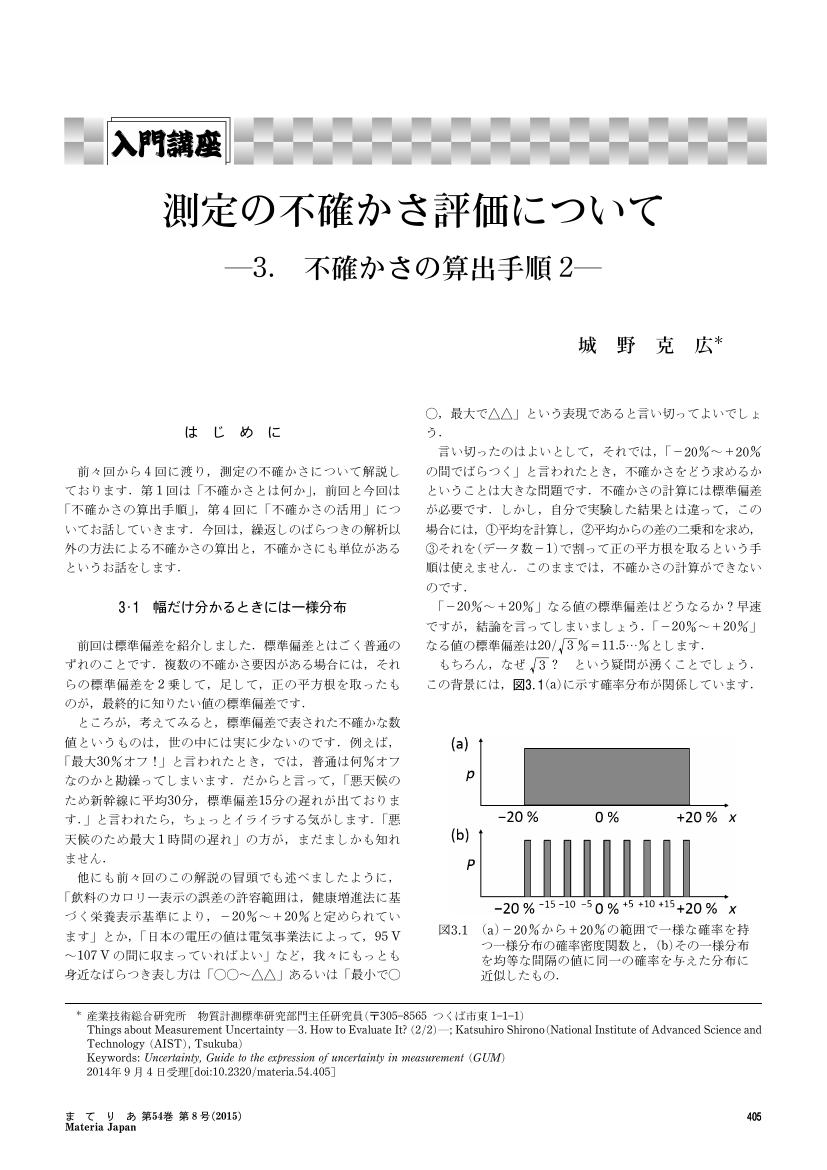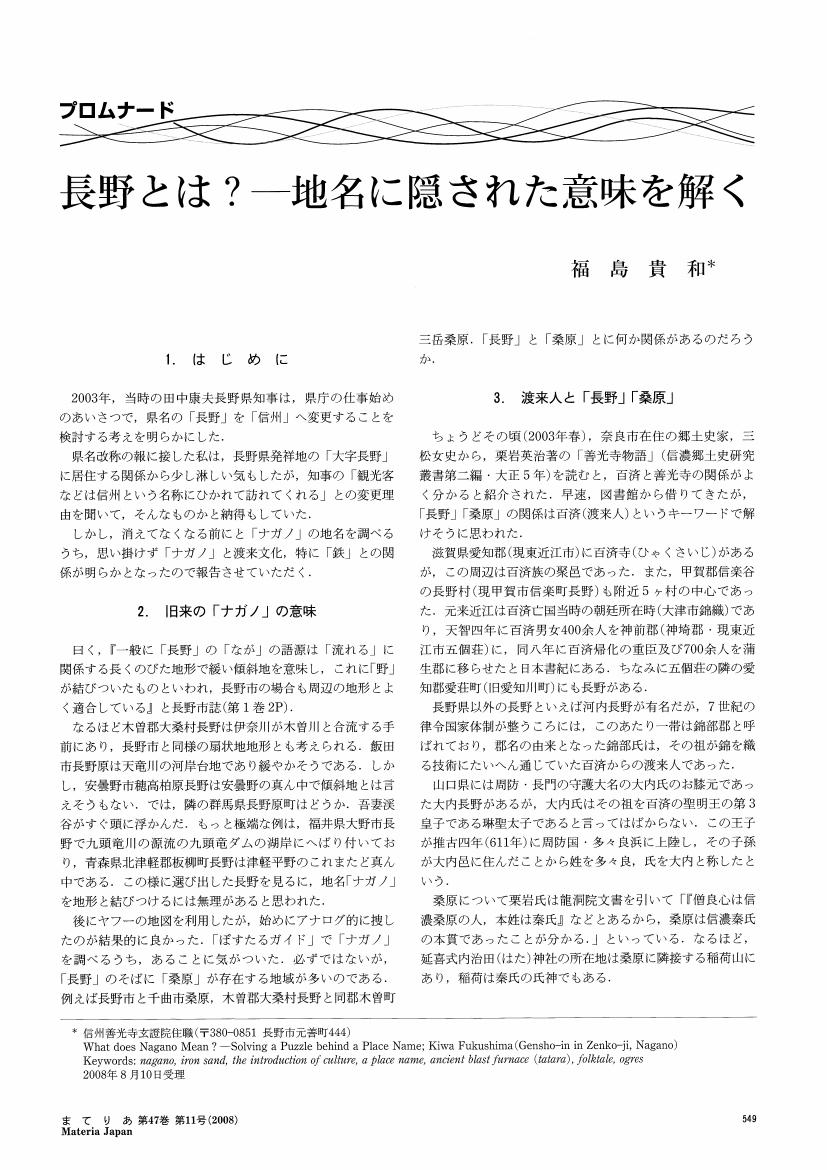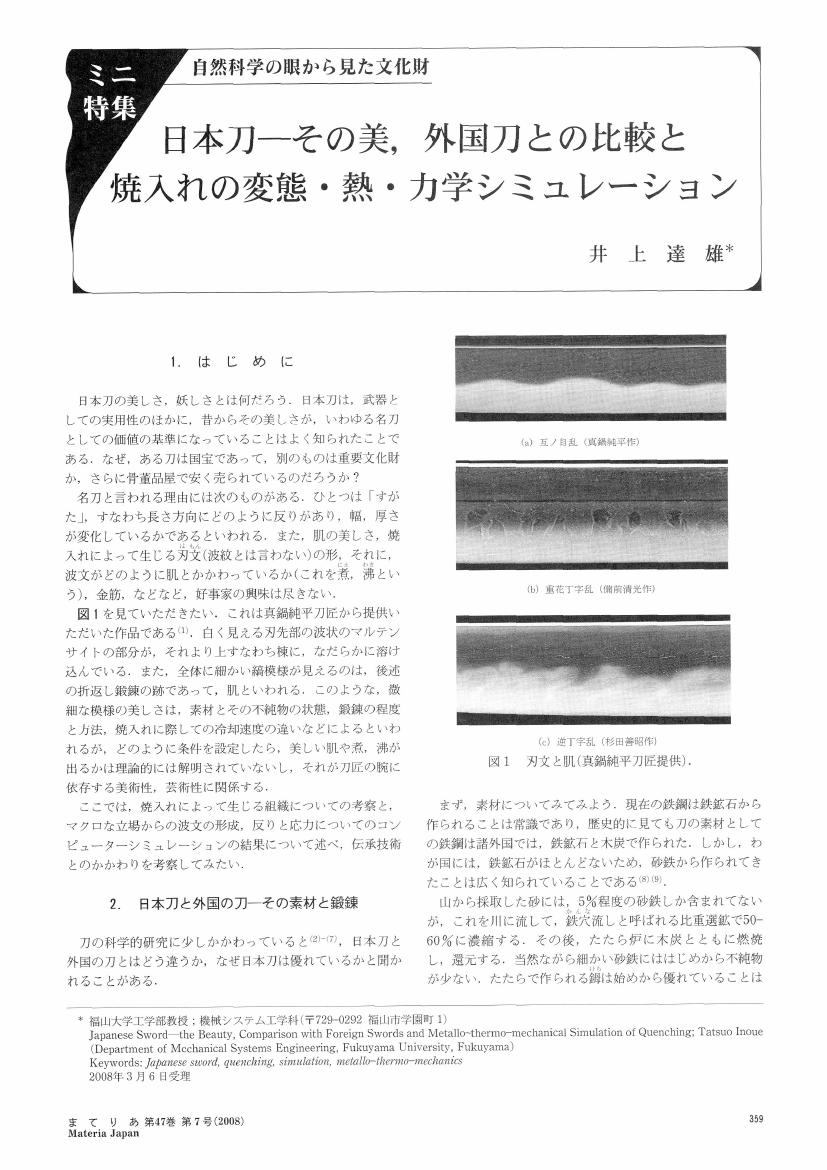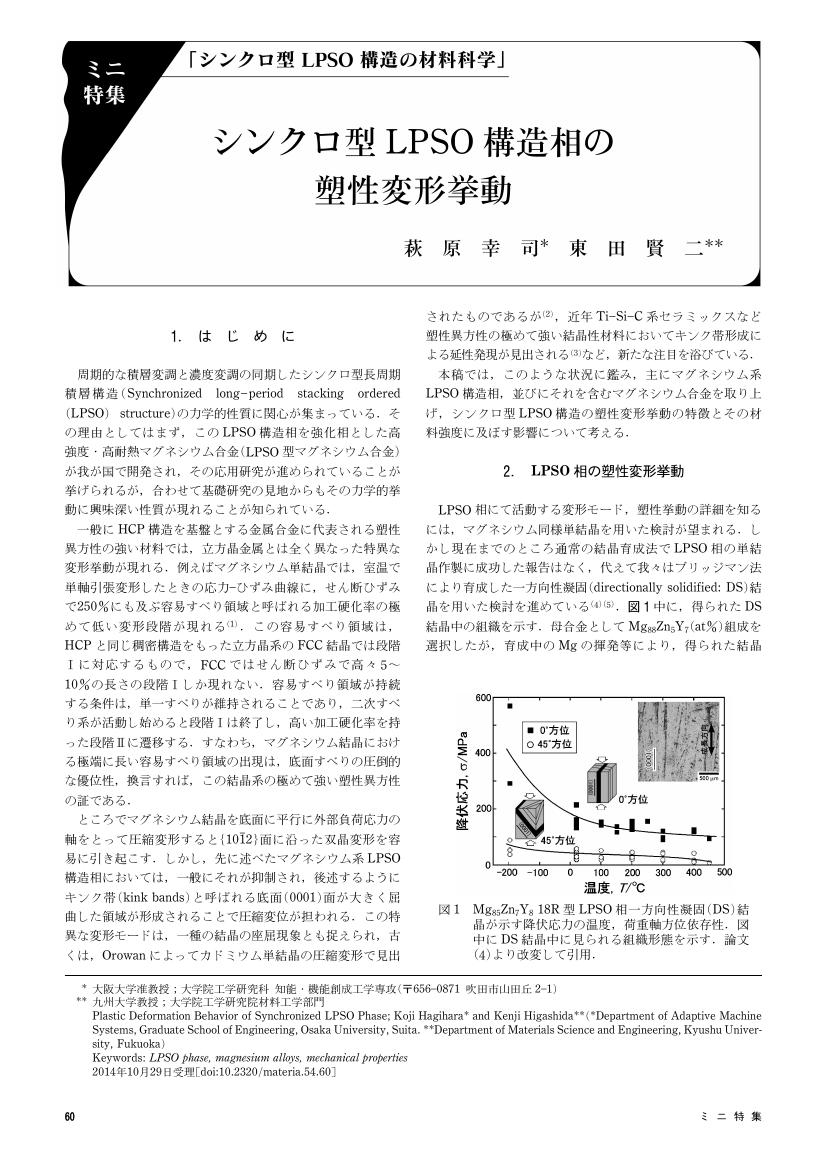4 0 0 0 OA シンバルの減衰特性に対する金属組織の影響
- 著者
- 小川 渉 菖蒲 敬久 筧 瑞恵 鞍谷 文保 小出 俊雄 文珠 義之 水田 泰次
- 出版者
- 公益社団法人 日本金属学会
- 雑誌
- 日本金属学会誌 (ISSN:00214876)
- 巻号頁・発行日
- vol.83, no.4, pp.128-135, 2019-04-01 (Released:2019-03-25)
- 参考文献数
- 9
- 被引用文献数
- 3 3
Cymbals are percussion musical instruments with a simpler structure than other musical instruments. Therefore, their material composition basically decides the sound quality and decay time rather than the skill of the player. In this study, specimens of cymbals to which Titanium, Zirconium and Iron were added were prepared. From the difference of diffraction rings by synchrotron radiation X-rays, the crystal structure of the specimens of cymbals prepared by various manufacturing processes was analyzed in order to investigate the relationship between the crystal structure associated with the material and manufacturing process used and the damping of the sound of cymbals. As a result, it was found that the changes in the crystal structure were due to the manufacturing process used. In addition, it was clarified that the changes affected the damping of the sound of cymbals.
4 0 0 0 OA 測定の不確かさ評価について —3. 不確かさの算出手順 2—
- 著者
- 城野 克広
- 出版者
- 公益社団法人 日本金属学会
- 雑誌
- まてりあ (ISSN:13402625)
- 巻号頁・発行日
- vol.54, no.8, pp.405-408, 2015 (Released:2015-08-01)
4 0 0 0 OA 機械特性とリサイクル性に優れたカーボン強化マグネシウム合金の開発
4 0 0 0 OA 金属と音色 トランペットとゴルフヘッドの音色を変える
- 著者
- 星 俊治 宮澤 憲一
- 出版者
- 公益社団法人 日本金属学会
- 雑誌
- まてりあ (ISSN:13402625)
- 巻号頁・発行日
- vol.35, no.1, pp.8-12, 1996-01-01 (Released:2011-08-11)
- 参考文献数
- 6
4 0 0 0 OA 東北の古い製鉄
- 著者
- 佐々木 清文
- 出版者
- 公益社団法人 日本金属学会
- 雑誌
- まてりあ (ISSN:13402625)
- 巻号頁・発行日
- vol.34, no.10, pp.1149-1153, 1995-10-20 (Released:2011-08-11)
- 参考文献数
- 10
4 0 0 0 OA 2050年の金属使用量予測
- 著者
- 原田 幸明 島田 正典 井島 清
- 出版者
- 公益社団法人 日本金属学会
- 雑誌
- 日本金属学会誌 (ISSN:00214876)
- 巻号頁・発行日
- vol.71, no.10, pp.831-839, 2007 (Released:2007-10-01)
- 参考文献数
- 8
- 被引用文献数
- 11 12
Forecasting are made regarding the consumption up to 2050 of following metals: Fe, Al, Cu, Mn, Zn, Cr, Pb, Ni, Si, Sn, rare earths, Mo, Li, Sb, W, Ag, Co, In, Au, Ga, Pt and Pd. The forecasts are based on the liniar decoupling model of the relation between per capita metal consumption and per capita GDP. The models of each metal are applied to the economic development model of BRICs and G6 countries. According these forecasts, the overall consumption of metals in 2050 will be five times greater than the current levels, and demand for metals, such as Au, Ag, Cu, Ni, Sn, Zn, Pb, and Sb, is expected to be several times greater than the amount of their respective reserves. Demand for iron and platinum, which is considered to be optimistic about the resource exhaustion, will also exceed the current reserves. Urgent measures are needed to find alternatives from common resources and to shift into materials circulation society.
4 0 0 0 OA グラファイトの多軸破壊則および非破壊検査
- 著者
- 佐藤 英一 小野田 淳次郎
- 出版者
- 公益社団法人 日本金属学会
- 雑誌
- まてりあ (ISSN:13402625)
- 巻号頁・発行日
- vol.40, no.8, pp.723-730, 2001-08-20 (Released:2011-08-11)
- 参考文献数
- 13
- 被引用文献数
- 4 3
3 0 0 0 OA 長野とは 地名に隠された意味を解く
- 著者
- 福島 貴和
- 出版者
- 公益社団法人 日本金属学会
- 雑誌
- まてりあ (ISSN:13402625)
- 巻号頁・発行日
- vol.47, no.11, pp.549-552, 2008-11-01 (Released:2011-08-11)
3 0 0 0 OA 教育と倫理 ─「人格の完成」をめぐって─
- 著者
- 宮村 悠介
- 出版者
- 公益社団法人 日本金属学会
- 雑誌
- まてりあ (ISSN:13402625)
- 巻号頁・発行日
- vol.56, no.4, pp.275-278, 2017 (Released:2017-04-01)
- 参考文献数
- 28
3 0 0 0 OA ソーダライムガラスにおける不純物の紫外線透過能に対する影響
- 著者
- 藤田 浩示 高原 良博
- 出版者
- 公益社団法人 日本金属学会
- 雑誌
- 日本金属学会誌 (ISSN:00214876)
- 巻号頁・発行日
- vol.71, no.12, pp.1071-1074, 2007 (Released:2007-12-01)
- 参考文献数
- 6
Recently, research and development using ultraviolet rays is being conducted in the bioscience field. In such R&D, expensive quartz glass is most often used as the ultraviolet transmitting material. The authors have been studying the use of inexpensive soda-lime glass as an alternative to quartz. In this study the authors investigated the effects of iron oxide and titanium oxide, which are found in raw materials, and crucible materials on the ultraviolet transmission properties of soda-lime glass. It was found that by reducing the amount of Fe2O3 and TiO2 contained in raw materials as impurities, it was possible for soda-lime glass to achieve high ultraviolet transmissivity. Reducing the amount of iron oxide turned out to be an especially effective way to improve ultraviolet transmissivity.
3 0 0 0 OA 湿式法を中心としたレアメタル等のリサイクル技術開発
- 著者
- 田中 幹也 小山 和也 成田 弘一 大石 哲雄
- 出版者
- 公益社団法人 日本金属学会
- 雑誌
- まてりあ (ISSN:13402625)
- 巻号頁・発行日
- vol.50, no.4, pp.161-167, 2011 (Released:2012-12-06)
- 参考文献数
- 45
- 被引用文献数
- 2 6
3 0 0 0 OA レニウムの現状と製錬技術
- 著者
- 八木 良平 岡部 徹
- 出版者
- 公益社団法人 日本金属学会
- 雑誌
- 日本金属学会誌 (ISSN:00214876)
- 巻号頁・発行日
- vol.80, no.6, pp.341-349, 2016 (Released:2016-05-25)
- 参考文献数
- 59
- 被引用文献数
- 3 13
Rhenium (Re) is used as additives in several alloys such as nickel-based superalloys for jet engine turbine blades, platinum catalysts for oil refining, and thermocouples used at ultra-high temperature, in order to improve strength and stability at high temperature. The demand of Re has been increasing with the increase in demand of the superalloys. In this article, current status such as demand and distribution of Re are reviewed, and smelting technologies for recovering Re from various ores are introduced.
3 0 0 0 OA 日本刀-その美, 外国刀との比較と焼入れの変態・熱・力学シミュレーション
- 著者
- 井上 達雄
- 出版者
- 公益社団法人 日本金属学会
- 雑誌
- まてりあ (ISSN:13402625)
- 巻号頁・発行日
- vol.47, no.7, pp.359-363, 2008-07-01 (Released:2011-08-11)
- 参考文献数
- 35
- 被引用文献数
- 1 2
- 著者
- 泉 富士夫
- 出版者
- 公益社団法人 日本金属学会
- 雑誌
- まてりあ (ISSN:13402625)
- 巻号頁・発行日
- vol.56, no.6, pp.393-396, 2017 (Released:2017-06-01)
- 参考文献数
- 10
- 被引用文献数
- 5
3 0 0 0 OA 宇宙における金属誕生物語
- 著者
- 高柳 雄一
- 出版者
- 公益社団法人 日本金属学会
- 雑誌
- まてりあ (ISSN:13402625)
- 巻号頁・発行日
- vol.36, no.8, pp.747-750, 1997-08-20 (Released:2011-08-11)
- 著者
- 泉 富士夫
- 出版者
- 公益社団法人 日本金属学会
- 雑誌
- まてりあ (ISSN:13402625)
- 巻号頁・発行日
- vol.56, no.8, pp.503-507, 2017 (Released:2017-08-01)
- 参考文献数
- 11
- 著者
- 泉 富士夫
- 出版者
- 公益社団法人 日本金属学会
- 雑誌
- まてりあ (ISSN:13402625)
- 巻号頁・発行日
- vol.56, no.7, pp.453-457, 2017 (Released:2017-07-01)
- 参考文献数
- 7
3 0 0 0 江戸時代後期に制作された小判ならびに銀判の制作技法の検討
- 著者
- 桐野 文良 大野 直志 田口 智子 根津 暁充 横山 亮一
- 出版者
- 公益社団法人 日本金属学会
- 雑誌
- 日本金属学会誌 (ISSN:00214876)
- 巻号頁・発行日
- 2019
<p>The production processes of old Japanese coins, <i>Genbun-koban</i>, <i>Akita-ginban</i> and <i>Morioka-ginban</i>, were studied. These coins were manufactured by a forging method in the <i>Edo</i>-era. <i>Genbun-koban</i>, manufactured at a gold mint of the <i>Tokugawa</i> shogunate called <i>Kinza</i>, in 1736, is made of Au-Ag alloy and its surface is not flat. The residual stress of this coin is compressive, and the residual stress in the stamped area is higher than that in the flat area. The <i>Iroage</i> method was used to color the coin; it is a thermal treatment, resulting in lows the residual stress is smaller at flat area. <i>Akita-ginban</i>, manufactured in the <i>Akita</i> domain in 1863 is made of pure Ag and its surface is also not flat. There is no residual stress in this coin. This result shows that the thermal treatment of this coin was carried out after processing. <i>Morioka-ginban</i>, manufactured in the <i>Morioka</i> domain in 1868, is made of pure Ag, and its surface is flat. The residual stress of this coin is compressive, and the residual stress in the stamped area is higher than that in the flat area. This result shows that the thermal treatment was not carried out after processing. These coins manufactured in the <i>Edo-</i>era thus had different thermal treatments.</p>
3 0 0 0 OA 鉄隕石の微細構造と磁性
- 著者
- 小嗣 真人 三俣 千春
- 出版者
- 公益社団法人 日本金属学会
- 雑誌
- まてりあ (ISSN:13402625)
- 巻号頁・発行日
- vol.49, no.3, pp.103-109, 2010 (Released:2012-11-01)
- 参考文献数
- 49
3 0 0 0 OA シンクロ型 LPSO 構造相の塑性変形挙動
- 著者
- 萩原 幸司 東田 賢二
- 出版者
- 公益社団法人 日本金属学会
- 雑誌
- まてりあ (ISSN:13402625)
- 巻号頁・発行日
- vol.54, no.2, pp.60-64, 2015 (Released:2015-02-01)
- 参考文献数
- 17














